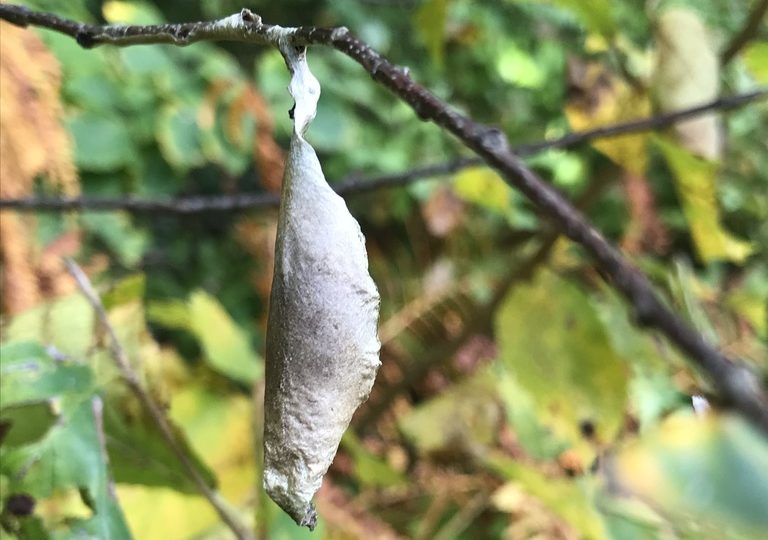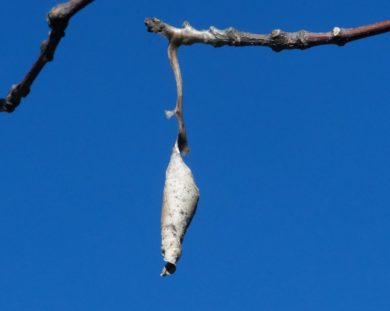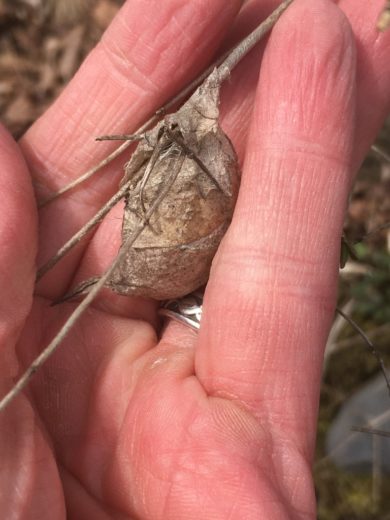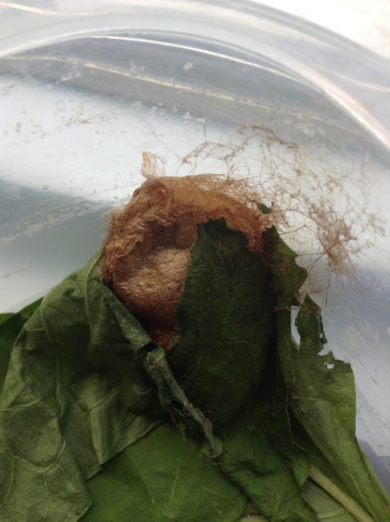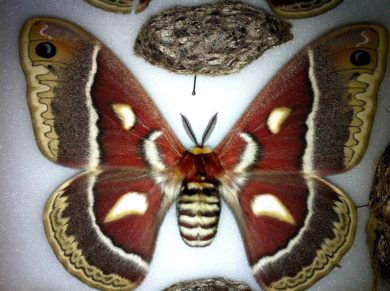Locating Cocoons
Most Vermont species of Giant Silk Moth attach their cocoons to trees, shrubs and other vegetation, either directly to twigs and branches (Cecropia Moth, Polyphemus Moth), within a leaf that is reinforced to remain attached to a twig (Promethea Moth), or to the trunk of a tree (Columbia Moth). Luna Moths create their cocoon within curled leaves as well, but do not reinforce the leaf, so their cocoons fall to the forest floor with the leaves and can be difficult to find.
As you stroll outside this November, check trees and shrubs of host plants for these moth cocoons. Cocoons may be located higher in the branches, or closer to the ground in younger host trees and shrubs. Cocoons are large (up to two inches), and may be spun in more protected parts of the twigs and branches, or may hang from a twig, appearing to be the last leaf remaining on the plant.
Check out The Caterpillar Lab for helpful information and tips!
Identifying Cocoons
Cecropia Cocoon
- Off-white, tan to brown in color
- Tight and slimmer, or looser and baggier in appearance
- Cocoons are attached lengthwise to twigs in exposed areas (usually tighter cocoons) or spun in the grass at the base of a host plant (usually baggier cocoons). Searching for baggier cocoons at the base of isolated cherry and apple trees growing along fences and roadsides can be useful.
- Host plants (frequent): Apple, ash, box elder, cherry, lilac, poplar, sassafras, and willow
- Additional host plants: Aceraceae – Maples; Betulaceae – Birches and hazelnuts; Berberidaceae – Barberry; Caprifoliaceae – found on Sambucus (elderberries); Fagaceae – Beech and White Oak; Oleaceae – Ashes and lilacs; Pinaceae – Picea (spruces); Rosaceae – Serviceberries, Hawthorne, Apples, Cherries, Blackberries and Raspberries; American Mountain Ash, Spiraea; Salicaceae – Willows; Saxifragaeae – Gooseberries; Tiliaceae – Basswood and Linden; Ulmaceae – Elms; Vitaceae – Virginia Creeper
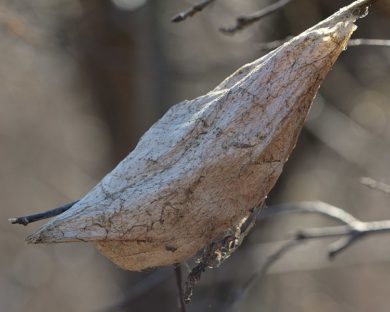
Cecropia Cocoon. © Ryan Hodnett
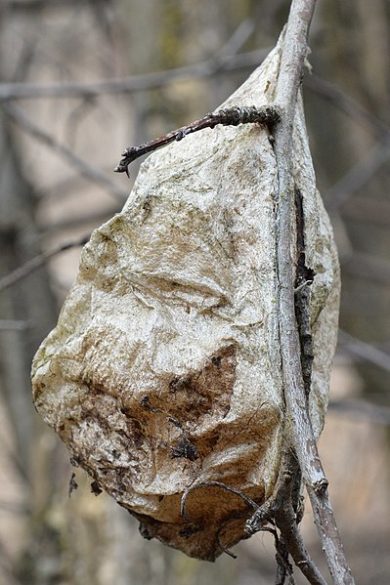
Cecropia Cocoon. © Ryan Hodnett
Promethea Cocoon
- Light gray or tan silk
- Spun inside a leaf that remains attached to the tree by reinforcing the leaf petiole with silk. Silk covers the entirety of the leaf that the cocoon is spun into.
- Young cherry trees are a god place to search – Promethea Moth larvae and cocoons are rarely higher than arm’s reach above the ground.
- Favorite hosts include: ash, buttonbush, cherry, lilac, magnolia, sassafras, silver bells, spicebush, sweet bay, sweetgum, and tulip tree.
- Other hosts include: Tilia (Basswood/ linden), Betulaceae (birches), Sapindaceae (maples)
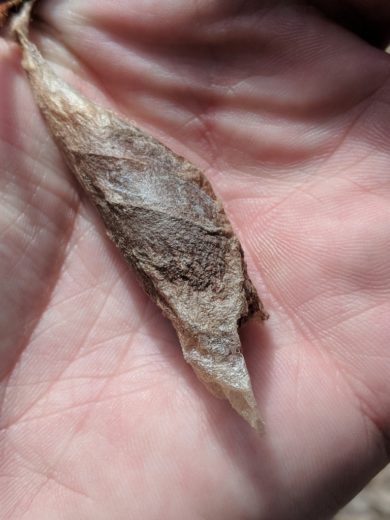
Promethea cocoon. © Nathaniel Sharp
Polyphemus Cocoon
- Tan to off-white.
- Thick and elliptical in shape – almost as wide as they are long.
- Cocoons may be spun in a number of different ways – attached longitudinally along the twig, hang on a twig from a silk peduncle, spun in the leaves and falling to he ground with leaf senescence, or spun into leaves and grasses on the ground.
- Many individuals descend from the host plants and pupate in the leaf litter.
- Favorite host plants include: Betulaceae (birch), Rosaceae (rose), Salicaceae (willow) families
- Other host plants include: Oak (Quercus), Willow (Salix), Maple (Acer), and Birch (Betula), apple (Malus), dogwood (Cornus), elm (Ulmus), hazel (Corylus), Hickory (Carya)
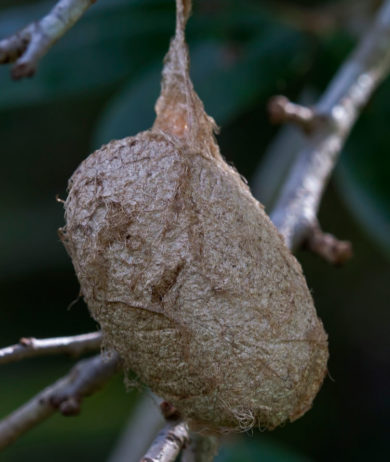
Polyphemus cocoon. © Richard Crook
Luna Cocoons
- Off white to light brown
- Wrapped inside leaves and spun in the leaf litter, but the silk does not entirely cover the leaf the way Promethea cocoons are spun.
- Favorite host plants include: Paper Birch and other Birch species, black gum, hickory, pecan, persimmon, sweetgum, and walnut.
- Other host species include: Sumacs (Rhus sp.)

Luna cocoon.
Columbia Cocoons
- Brown
- Compact
- Spun close to the ground on branches or on the trunk of a tree or shrub, usually near or surrounded by thick underbrush.
- Favorite species: Larch (Larix)
- Other host species: Cherries (Prunus), Alders (Alnus), Paper Birch (Betula papyrifera), Willows (Salix)
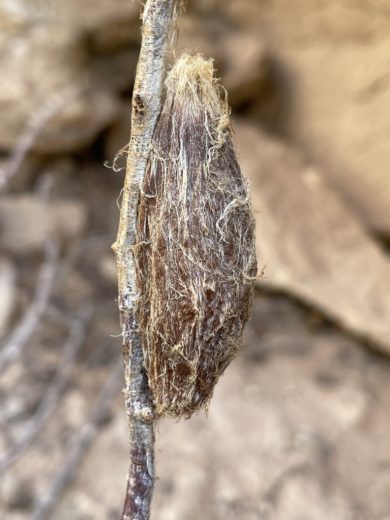
Columbia Cocoon © Rob Hannawacker
